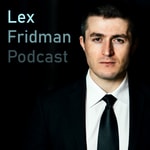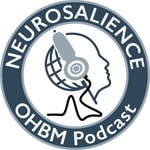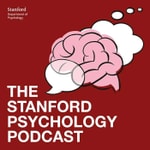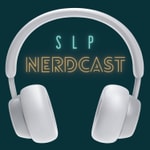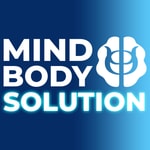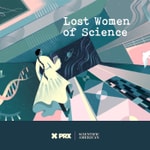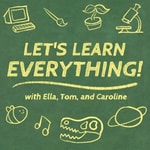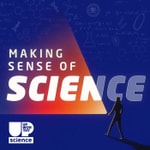The Language Neuroscience Podcast – Détails, épisodes et analyse
Détails du podcast
Informations techniques et générales issues du flux RSS du podcast.
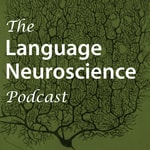

A podcast about the scientific study of language and the brain. Neuroscientist Stephen Wilson talks with leading and up-and-coming researchers about their work and ideas. This podcast is geared to an audience of scientists who are working in the field of language neuroscience, from students to postdocs to faculty.
Classements récents
Dernières positions dans les classements Apple Podcasts et Spotify.
Apple Podcasts
🇬🇧 Grande Bretagne - lifeSciences
14/08/2025#30🇺🇸 États-Unis - lifeSciences
14/08/2025#73🇺🇸 États-Unis - lifeSciences
13/08/2025#86🇬🇧 Grande Bretagne - lifeSciences
12/08/2025#93🇬🇧 Grande Bretagne - lifeSciences
11/08/2025#88🇺🇸 États-Unis - lifeSciences
11/08/2025#98🇬🇧 Grande Bretagne - lifeSciences
10/08/2025#76🇺🇸 États-Unis - lifeSciences
10/08/2025#73🇬🇧 Grande Bretagne - lifeSciences
09/08/2025#68🇺🇸 États-Unis - lifeSciences
09/08/2025#89
Spotify
Aucun classement récent disponible
Liens partagés entre épisodes et podcasts
Liens présents dans les descriptions d'épisodes et autres podcasts les utilisant également.
See all- https://chomsky.info/
14 partages
- https://lauragwilliams.github.io/
3 partages
Qualité et score du flux RSS
Évaluation technique de la qualité et de la structure du flux RSS.
See allScore global : 47%
Historique des publications
Répartition mensuelle des publications d'épisodes au fil des années.
Developmental language disorder and its neural basis with Dorothy Bishop
Saison 4 · Épisode 29
jeudi 4 avril 2024 • Durée 01:23:18
In this episode, I talk with Dorothy Bishop, Emeritus Professor of Developmental Neuropsychology at the University of Oxford, about her work on developmental langauge disorder and its neural basis.
Bishop DVM. Comprehension in developmental language disorders. Dev Med Child Neurol. 1979;21:225-38. [doi]
Bishop DVM, Snowling MJ, Thompson PA, Greenhalgh T, CATALISE consortium. CATALISE: A multinational and multidisciplinary Delphi consensus study: Identifying language impairments in children. PLoS One. 2016;11:e0158753. [doi]
Bishop DVM, Snowling MJ, Thompson PA, Greenhalgh T, CATALISE‐2 consortium. Phase 2 of CATALISE: a multinational and multidisciplinary Delphi consensus study of problems with language development: Terminology. J Child Psychol Psychiatry. 2017;58:1068-80. [doi]
Wilson AC, Bishop DVM. Resounding failure to replicate links between developmental language disorder and cerebral lateralisation. PeerJ. 2018;6:e4217. [doi]
Bishop D. Rein in the four horsemen of irreproducibility. Nature. 2019;568:435. [doi]
‘Determinants of multilevel discourse outcomes in anomia treatment for aphasia’ with Rob Cavanaugh
Saison 3 · Épisode 28
samedi 14 octobre 2023 • Durée 01:15:14
In this episode, I talk with Rob Cavanaugh, Research Data Analyst at the Observational Health Data Sciences and Informatics Center at Northeastern University, about his dissertation ‘Determinants of multilevel discourse outcomes in anomia treatment for aphasia’.
Cavanaugh, R. Determinants of multilevel discourse outcomes in anomia treatment for aphasia. Doctoral dissertation, University of Pittsburgh. [dissertation]
Anatomy and neuropathology of progressive speech and language disorders, with Keith Josephs
Saison 2 · Épisode 19
mardi 22 février 2022 • Durée 01:01:44
In this episode, I talk with Keith Josephs, Professor of Neurology at the Mayo Clinic in Rochester, Minnesota, about his work on the anatomy and neuropathology of progressive speech and language disorders.
Josephs KA, Duffy JR, Strand EA, Whitwell JL, Layton KF, Parisi JE, et al. Clinicopathological and imaging correlates of progressive aphasia and apraxia of speech. Brain 2006; 129: 1385-98. [doi]
Josephs KA, Hodges JR, Snowden JS, Mackenzie IR, Neumann M, Mann DM, et al. Neuropathological background of phenotypical variability in frontotemporal dementia. Acta Neuropathol 2011; 122: 137-53. [doi]
Josephs KA, Duffy JR, Strand EA, Machulda MM, Senjem ML, Master AV, et al. Characterizing a neurodegenerative syndrome: primary progressive apraxia of speech. Brain 2012; 135: 1522-36. [doi]
Josephs KA, Duffy JR, Strand EA, Machulda MM, Senjem ML, Lowe VJ, et al. Syndromes dominated by apraxia of speech show distinct characteristics from agrammatic PPA. Neurology 2013; 81: 337-45. [doi]
Graff-Radford J, Jones DT, Strand EA, Rabinstein AA, Duffy JR, Josephs KA. The neuroanatomy of pure apraxia of speech in stroke. Brain Lang 2014; 129: 43-6. [doi]
Josephs KA, Duffy JR, Clark HM, Utianski RL, Strand EA, Machulda MM, et al. A molecular pathology, neurobiology, biochemical, genetic and neuroimaging study of progressive apraxia of speech. Nat Commun 2021; 12: 3452. [doi]
Imaging the language network, with Cathy Price
Saison 1 · Épisode 18
lundi 27 décembre 2021 • Durée 01:07:44
In this episode, I talk with Cathy Price, Professor of Cognitive Neuroscience and Director of the Wellcome Trust Centre for Neuroimaging at University College London, about her pioneering work on functional neuroimaging of the language network, whether there are really such things as “language regions”, degeneracy, predicting and explaining language outcomes after stroke, and more.
Price C, Wise R, Ramsay S, Friston K, Howard D, Patterson K, Frackowiak R. Regional response differences within the human auditory cortex when listening to words. Neurosci Lett 1992; 146: 179-82. [doi]
Price CJ, Wise RJS, Warburton EA, Moore CJ, Howard D, Patterson K, Frackowiak R, Friston K. Hearing and saying. Brain 1996; 119: 919-31. [doi]
Price CJ, Friston KJ. Degeneracy and cognitive anatomy. Trends Cogn Sci 2002; 6: 416-21. [doi]
Crinion J, Price CJ. Right anterior superior temporal activation predicts auditory sentence comprehension following aphasic stroke. Brain 2005; 128: 2858-71. [doi]
Price CJ, Seghier ML, Leff AP. Predicting language outcome and recovery after stroke: the PLORAS system. Nat Rev Neurol 2010; 6: 202-10. [doi]
Price CJ. A review and synthesis of the first 20 years of PET and fMRI studies of heard speech, spoken language and reading. NeuroImage 2012; 62: 816-47. [doi]
Hope TMH, Seghier ML, Leff AP, Price CJ. Predicting outcome and recovery after stroke with lesions extracted from MRI images. NeuroImage Clin 2013; 2: 424-33. [doi]
Seghier ML, Price CJ. Interpreting and utilising intersubject variability in brain function. Trends Cogn Sci 2018; 22: 517-30. [doi]
Language development and perinatal stroke, with Elissa Newport
Saison 1 · Épisode 17
mardi 23 novembre 2021 • Durée 01:10:30
In this episode, I talk with Elissa Newport, Professor of Neurology and Rehabilitation Medicine at Georgetown University Medical Center, about her work on the neural and cognitive underpinnings of language development, including statistical learning, language after perinatal stroke, lateralization, plasticity, the critical period, and more.
Saffran JR, Aslin RN, Newport EL. Statistical learning by 8-month-old infants. Science 1996; 274: 1926-8. [doi]
Newport EL, Landau B, Seydell-Greenwald A, Turkeltaub PE, Chambers CE, Dromerick AW, Carpenter J, Berl MM, Gaillard WD. Revisiting Lenneberg’s hypotheses about early developmental plasticity: Language organization after left-hemisphere perinatal stroke. Biolinguistics 2017; 11: 407-22. [doi]
Olulade OA, Seydell-Greenwald A, Chambers CE, Turkeltaub PE, Dromerick AW, Berl MM, Gaillard WD, Newport EL. The neural basis of language development: Changes in lateralization over age. Proc Natl Acad Sci USA 2020; 117: 23477-83. [doi]
‘Robust effects of working memory demand during naturalistic language comprehension in language-selective cortex’ with Cory Shain
Saison 1 · Épisode 16
lundi 4 octobre 2021 • Durée 01:04:31
In this episode, I talk with Cory Shain, postdoctoral researcher in the Department of Brain and Cognitive Sciences at MIT, about his recent fMRI study of working memory demand in naturalistic language comprehension.
Shain C, Blank IA, Fedorenko E, Gibson E, Schuler W. Robust effects of working memory demand during naturalistic language comprehension in language-selective cortex. bioRxiv 2021; 2021.09.18.460917. [doi]
‘Situating the left-lateralized language network in the broader organization of multiple specialized large-scale distributed networks’ with Rodrigo Braga
Saison 1 · Épisode 15
mardi 14 septembre 2021 • Durée 53:38
In this episode, I talk with Rodrigo Braga, Assistant Professor of Neurology at Northwestern University, about his recent paper on identifying the language network from functional connectivity analyses of resting state data.
Braga RM, DiNicola LM, Becker HC, Buckner RL. Situating the left-lateralized language network in the broader organization of multiple specialized large-scale distributed networks. J Neurophysiol 2020; 124: 1415-48. [doi]
Neurotypology, predictive coding, and dorsal and ventral streams, with Ina Bornkessel-Schlesewsky
Saison 1 · Épisode 14
mardi 24 août 2021 • Durée 56:05
In this episode, I talk with Ina Bornkessel-Schlesewsky, Professor of Cognitive Neuroscience at the University of South Australia, about neurotypology, predictive coding, and dorsal and ventral streams.
Bornkessel-Schlesewsky lab website
Bornkessel I, Zysset S, Friederici AD, Von Cramon DY, Schlesewsky M. Who did what to whom? The neural basis of argument hierarchies during language comprehension. NeuroImage 2005; 26: 221-33. [doi]
Bornkessel-Schlesewsky I, Schlesewsky M. Reconciling time, space and function: a new dorsal-ventral stream model of sentence comprehension. Brain Lang 2013; 125: 60-76. [doi]
Bornkessel-Schlesewsky I, Schlesewsky M, Small SL, Rauschecker JP. Neurobiological roots of language in primate audition: common computational properties. Trends Cogn Sci 2015; 19: 142-50. [doi]
Bornkessel-Schlesewsky I, Schlesewsky M. Toward a neurobiologically plausible model of language-related, negative event-related potentials. Front Psychol 2019; 10: 298. [doi]
‘Neuroprosthesis for decoding speech in a paralyzed person with anarthria’ with David Moses and Jessie Liu
Saison 1 · Épisode 13
vendredi 6 août 2021 • Durée 01:06:53
In this episode, I talk with David Moses and Jessie Liu about their recent NEJM paper ‘Neuroprosthesis for decoding speech in a paralyzed person with anarthria’, in which they decoded intended utterances from the brain of an individual with anarthria using an electrode array implanted of sensorimotor cortex and machine learning.
Moses DA, Metzger SL, Liu JR, et al. Neuroprosthesis for decoding speech in a paralyzed person with anarthria. N Eng J Med 2021; 385: 217-27. [doi]
Related papers:
Bouchard KE, Mesgarani N, Johnson K, Chang EF. Functional organization of human sensorimotor cortex for speech articulation. Nature 2013; 495: 327-32. [doi]
Chartier J, Anumanchipalli GK, Johnson K, Chang EF. Encoding of articulatory kinematic trajectories in human speech sensorimotor cortex. Neuron 2018; 98: 1042-54. [doi]
Anumanchipalli GK, Chartier J, Chang EF. Speech synthesis from neural decoding of spoken sentences. Nature 2019; 568: 493-8. [doi]
Moses DA, Leonard MK, Makin JG, Chang EF. Real-time decoding of question-and-answer speech dialogue using human cortical activity. Nat Commun 2019; 10: 3096. [doi]
Makin JG, Moses DA, Chang EF. Machine translation of cortical activity to text with an encoder–decoder framework. Nat Neurosci 2020; 23: 575-82. [doi]
Neuromodulation with Roy Hamilton
Saison 1 · Épisode 12
mardi 13 juillet 2021 • Durée 01:06:59
In this episode, I talk with Roy Hamilton, Associate Professor of Neurology at the University of Pennsylvania, about his work using transcranial magnetic stimulation (TMS) and transcranial direct current stimulation (TDCS), and in particular the application of these neuromodulatory techniques to enhance recovery from aphasia.
Laboratory for Cognition and Neural Stimulation
Penn Brain Science, Translation, Innovation, and Modulation Center
Hamilton RH, Pascual-Leone A. Cortical plasticity associated with Braille learning. Trends Cogn Sci 1998; 2: 168-174. [doi]
Naeser MA, Martin PI, Treglia E, Ho M, Kaplan E, Bashir S, Hamilton R, Coslett HB, Pascual-Leone A. Research with rTMS in the treatment of aphasia. Restor Neurol Neurosci 2010; 28: 511-529. [doi]
Hamilton RH, Chrysikou EG, Coslett B. Mechanisms of aphasia recovery after stroke and the role of noninvasive brain stimulation. Brain Lang 2011; 118): 40-50. [doi]
Price AR, Peelle JE, Bonner MF, Grossman M, Hamilton RH. Causal evidence for a mechanism of semantic integration in the angular gyrus as revealed by high-definition transcranial direct current stimulation. J Neurosci 2016; 36: 3829-3838. [doi]
Carr RM, Lane-Fall MB, South E, Brady D, Momplaisir F, Guerra CE, Montoya-Williams D, Dalembert G, Lavizzo-Mourey R, Hamilton R. Academic careers and the COVID-19 pandemic: Reversing the tide. Sci Transl Med 2021; 13: eabe7189. [doi]

